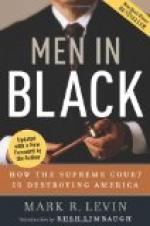“Well, we ought to give that boy something.”
“I don’t like the looks of that last witness.”
“That lawyer for the defendant was too smart.”
“But do you think the driver tried to cut him off?”
“He couldn’t have been in bed six weeks.”
“No man would stay in bed that long with a sore knee.”
“Oh, well, he only meant he was about the house.”
“That doctor was a great one. He loved to get off those terms; he must be just graduated from the hospital.”
“Did you hear the lawyer say in a case he tried in Brooklyn he had seventeen of those experts?”
“Well, let’s take another vote and see if we can’t get together.”
“I can’t stay here all day. I’ve got to close something important at four o’clock.”
“You’ll stay here if you have to; we want to get this settled right.”
Another vote is taken. The result is the same and the two sides gradually assume opposing positions. Each one takes a leader and spokesman; the discussion is probably between those two and an occasional interjection by the others. By this time the argument has grown tense and after half an hour the original arguments of counsel, the evidence, the instructions of the judge have become merged in the minds of the jury with what has been talked of in the jury room. The recollection of each juror includes the recollection of the discussion that they are having. The mental picture is now a combination of what each witness thought, each lawyer conceived it, how the judge described it, what they imagined it during the trial, and added to the mental concept is the recent present struggle between twelve points of view.
They do not remember what it was the judge told them about their verdict. Suppose they send out and ask him. No, they do not want to appear like fools. It is plain. Their verdict must be for the plaintiff or the defendant. But in that contract case where the other side wanted something back from the plaintiff, how are they going to find a verdict for both? They can’t find a verdict both ways. They had better send out and ask the judge. No. Well then they will send for the pleadings, they will show.
“What,” says one juryman, “do you think those pleadings would show anything a reasonable man could understand?”
They decide that there was a bill that told the story. They knock on the door. The court attendant opens it. They explain, he gathers in the lawyers, and they go to the judge’s desk. There is a thrill. The jury have agreed so quickly it must mean a verdict for the plaintiff. If they had been out longer it would have meant there was a disagreement or a verdict for the defendant. The longer the jury stays out the better for the defendant thinks the lawyer. But the actions of the jury are uncertain and there may be no rule of arriving at their decision.
There is the story of the judge who, after the jury had been out for a long time, made a bet with the stenographer as to how the jury were going to decide. The judge thought himself an expert in determining the probable verdicts of the jury. After they came in and announced their decision and were discharged, the judge having lost looked crestfallen. The stenographer smiled. Then the judge recovered himself.




